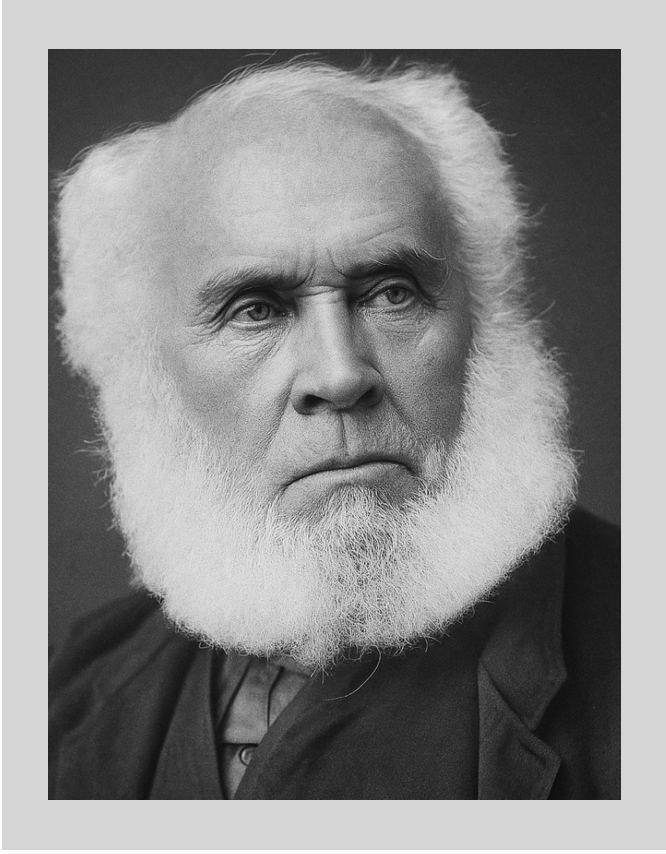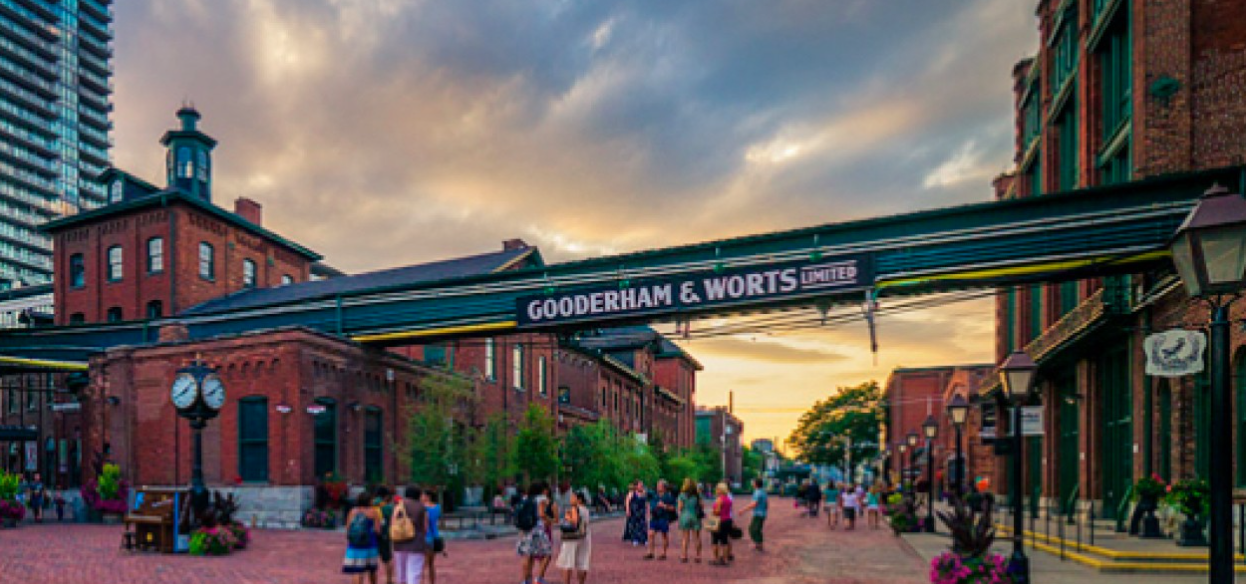William Gooderham
“Soldier, Miller, Distiller, Legend”
William Gooderham was born August 29, 1790, in Scole, England, and was the second son of Norfolk farmers James and Sarah Gooderham. As a young boy, William left his father’s farm for a job in London working with his uncle, who was involved in the East Indies trade. Later, during the Napoleonic wars, Gooderham served with the Royal York Rangers, taking part in campaigns in the Caribbean, until he suddenly became ill with yellow fever and was then sent for light duty, back in England to work as a recruiting officer. These military years helped Gooderham build experience, as well as capital, both of which he later used in his business ventures.
In 1820, Gooderham married Harriet Tovell Herring, and together they had eight sons and seven daughters. In 1832, the Gooderhams emigrated to an area then called “Upper Canada (York),” now known as Toronto. Once there, Gooderham was convinced by his brother-in-law, James Worts, to invest in a wind-powered flour mill in York, and in accepting the proposition, the two entrepreneurs became business partners. Worts had owned a mill in Diss, England, and felt that the idea would catch on in Toronto. So the partners traded flour and wheat products as ‘Worts & Gooderham’ for two years, until Worts's surprising and unfortunate suicide in 1834, following the depression resulting from his wife’s death from childbirth. Thereafter, Gooderham ran the milling business as William Gooderham & Company, but he cared for and later partnered with Wort's eldest son, James Gooderham Worts, treating him as an equal in the enterprise in place of the boy’s deceased father.
As many millers were apt to do in those days, in 1837, Gooderham created a distillery to bring in additional revenue and to utilize surplus and low-grade grain from his mills. The whiskey he made quickly became so popular that it was one of Canada’s largest distilleries of that time and, in fact, eventually became the largest distillery in the entire British Empire for about 8 years.
In 1845, the now 55-year-old Gooderham officially made James G. Worts a partner, and the firm was now known as Gooderham & Worts. They expanded and invested heavily in modern industrial technology, including gas lighting in their mills, steam power in their plants, and even built their own wharf for shipping. Gooderham further financed large projects such as the Stone Distillery, which was completed in 1859, dramatically adding capacity. In 1862, the facility made an astonishing (for the time) 700,000 gallons of spirits in its first year of production.
By the 1860s, Gooderham and Worts owned ships, rail interests, and was a major York employer and exporter of goods and whiskey. Gooderham was also a business and community leader in York, now known as Toronto, and was active on the Board of Trade. In 1864, he also served as president of the Bank of Toronto. His firm’s tax and export activities made the company an important contributor to the provincial economy. Regrettably, another tragedy struck in 1869 when there was a huge explosion in the fermenting cellar of the Stone Distillery, which caused a massive fire that completely consumed the wooden interior, scorching the exterior stone, but miraculously leaving the iron machinery inside in passable working condition.
Gooderham’s wife, Harriet, died on March 5, 1885, at the age of 82, and four years later, on August 20, 1889, William Gooderham died in Toronto at the age of 89. His funeral had one of that city’s largest turnouts of mourners up to that time, effectively shutting down much of the metropolitan area for three days.
Meanwhile, through the 1880s and 1890s, under Worts’ leadership, the complex was slowly rebuilt from the fire. Several rack houses and storage buildings, now including a Fire Pump House, were finished by about 1895, giving the site the large ensemble of brick/stone Victorian industrial buildings, most of which are still standing today. The well-known Gooderham Building, a wedge or “flatiron” office building, was finished in 1892 and served as company offices. The building became an iconic Toronto landmark tied to the firm’s late-Victorian success. By the end of the 19th century, Gooderham & Worts had expanded into one of Toronto’s largest employers and was still one of the largest distilleries in the world, with extensive wharves, elevators, and a cooperage onsite.
During WWI and with the Ontario Temperance Act of 1916, the company’s local whisky sales were severely restricted. Gooderham & Worts adapted cleverly by selling commodities outside Ontario (mostly in Quebec) and by diversifying into manufacturing products such as industrial alcohol and antifreeze. During both World Wars, the Gooderham & Worts Distillery was utilized by the government to manufacture explosives for the war effort.
In 1923, the company’s controlling interest was sold to Harry C. Hatch, reportedly for $1.5 million, equivalent to about $19 million today. Three years later, in 1926. Gooderham & Worts was abruptly merged with Hiram Walker & Sons Ltd. to form Hiram Walker-Gooderham & Worts Ltd., a major corporate reorganization that changed the brand’s ownership and future production footprint. It continued to operate in a successful distillery capacity, uninterrupted from 1945 to 1990.
Gooderham & Worts whisky was usually sold in a 375-ml amber glass bottle with an aluminum screw top, which is now highly collectible. They were fired with an image known affectionately as the “Bearded Mountie”, a man with a long beard (not dissimilar from Gooderham’s), but wearing a traditional RCMP hat. The actual inspiration for the “Bearded Mountie” was never divulged.
In 1988, the Gooderham and Worts distillery complex on the Toronto waterfront was designated as a National Historic Site of Canada. The Stone Distillery and other mill buildings have now been preserved and reborn as today’s Distillery District, a major cultural and heritage site as well as a destination for Hollywood to film various movies.
William Gooderham’s 50-year industrial and civic mark on Canadian Whisky, as well as his and his nephew’s well-received influence on the city of Toronto, remain visible to this day. Gooderham is an example of an industrial giant, a quiet Canadian entrepreneur who left behind a home to build another and, in doing so, changed the face of the whisky industry throughout the world.
Contributed by Katrina Bevington, Ottawa, Ontario
Gooderham & Worts Distillery District, Trinity Street, Toronto. The complex has been owned by a group called Cityscape since 2002. The owners have since converted 24 buildings into spaces for artists and artistic galleries (above)
Hiram Walker is now owned by Pernod Ricard, and still makes Gooderham & Worts brand whisky, but does so at its plant in Windsor, Ontario, not at the location shown above.







